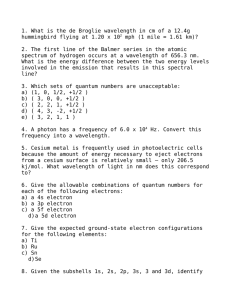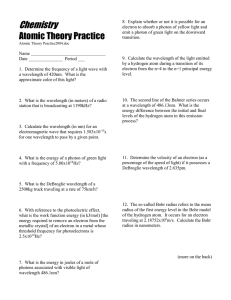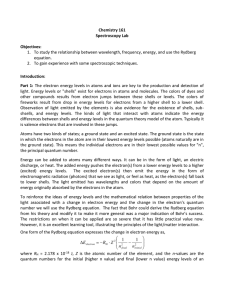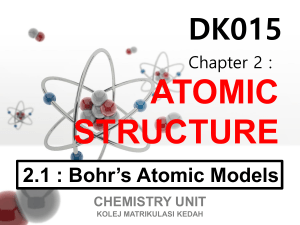7 Atomic Structure 1
advertisement
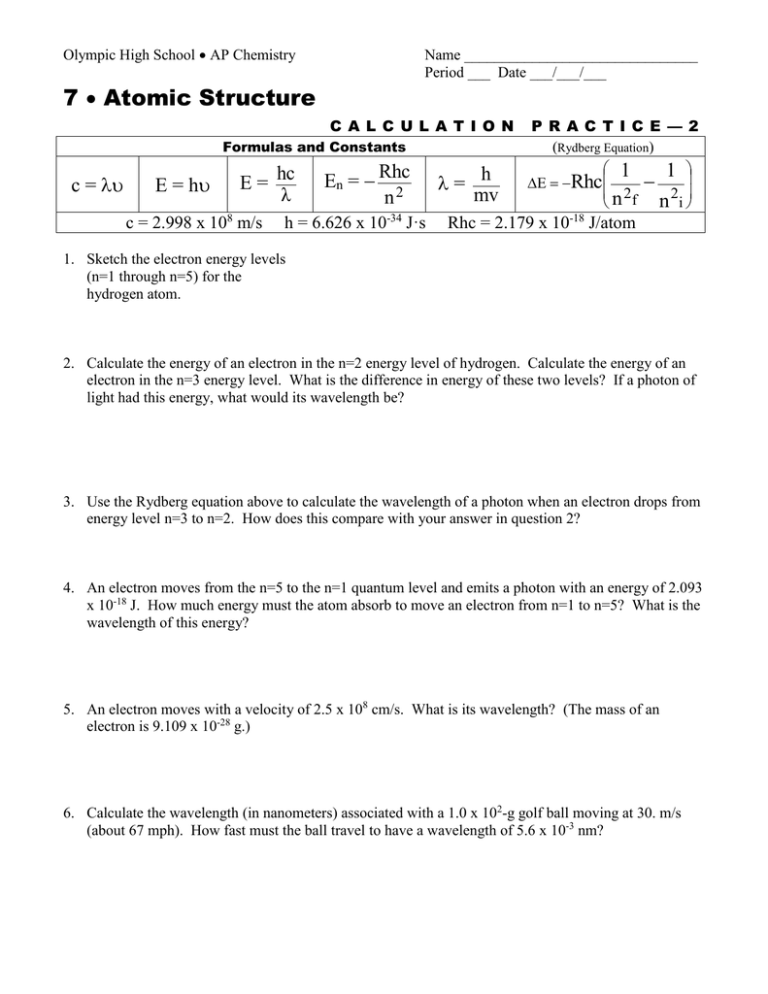
Olympic High School AP Chemistry Name _______________________________ Period ___ Date ___/___/___ 7 Atomic Structure C A L C U L A T I O N Formulas and Constants c = E = h E = hc λ c = 2.998 x 108 m/s En = Rhc n2 h = 6.626 x 10-34 J·s = h mv P R A C T I C E — 2 (Rydberg Equation) 1 1 Rhc n 2f n 2i Rhc = 2.179 x 10-18 J/atom 1. Sketch the electron energy levels (n=1 through n=5) for the hydrogen atom. 2. Calculate the energy of an electron in the n=2 energy level of hydrogen. Calculate the energy of an electron in the n=3 energy level. What is the difference in energy of these two levels? If a photon of light had this energy, what would its wavelength be? 3. Use the Rydberg equation above to calculate the wavelength of a photon when an electron drops from energy level n=3 to n=2. How does this compare with your answer in question 2? 4. An electron moves from the n=5 to the n=1 quantum level and emits a photon with an energy of 2.093 x 10-18 J. How much energy must the atom absorb to move an electron from n=1 to n=5? What is the wavelength of this energy? 5. An electron moves with a velocity of 2.5 x 108 cm/s. What is its wavelength? (The mass of an electron is 9.109 x 10-28 g.) 6. Calculate the wavelength (in nanometers) associated with a 1.0 x 102-g golf ball moving at 30. m/s (about 67 mph). How fast must the ball travel to have a wavelength of 5.6 x 10-3 nm?



